Nicolas Tredell
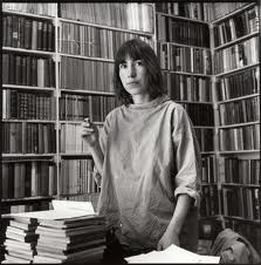
The London of Laura Del-Rivo’s first novel, The Furnished Room (1961), is that of the late 1950s when racial tensions became highly visible in Notting Hill and the signs of swinging – and swingeing – London, in sexual behaviour, in popular music, in fashion, and in respectable outrage, began to appear. But life in the capital for young people with jobs as clerks and typists and shop assistants was still repressed, with a repetitive working week shadowed by the recurrent inertia of Sundays and a sporadic pursuit of pleasure in cafés and at parties.
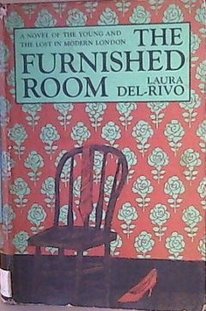 Laura Del-Rivo herself knew this London. Born in 1934, she grew up in Cheam, in a respectable family that had rather come down in the world. Her grandfather was an Italian who had married Mary O’Connell, a granddaughter of Daniel O’Connell, the Irish political leader known as ‘The Liberator’, but her father, as Del-Rivo herself puts it, ‘was a complex man who wore without complaint the homburg hat and the overcoat appropriate to a bank employee of the middle rank. He played bowls, and pursued his interest in Greek and Roman classical history’. Del-Rivo was educated at Holy Cross Convent, New Malden but left at 16, at the start of the 1950s, to work in a range of London jobs – assistant in Foyles bookshop, counter hand in a Joe Lyons’ tearoom, art-school model, office clerk, messenger and char – and to spend her evenings in Soho cafes, where would-be writers exchanged manuscripts.
Laura Del-Rivo herself knew this London. Born in 1934, she grew up in Cheam, in a respectable family that had rather come down in the world. Her grandfather was an Italian who had married Mary O’Connell, a granddaughter of Daniel O’Connell, the Irish political leader known as ‘The Liberator’, but her father, as Del-Rivo herself puts it, ‘was a complex man who wore without complaint the homburg hat and the overcoat appropriate to a bank employee of the middle rank. He played bowls, and pursued his interest in Greek and Roman classical history’. Del-Rivo was educated at Holy Cross Convent, New Malden but left at 16, at the start of the 1950s, to work in a range of London jobs – assistant in Foyles bookshop, counter hand in a Joe Lyons’ tearoom, art-school model, office clerk, messenger and char – and to spend her evenings in Soho cafes, where would-be writers exchanged manuscripts.
Here she met two unknowns, Colin Wilson and Bill Hopkins, who, along with Stuart Holroyd, were to emerge briefly, after the success of Wilson’s Outsider (1956), as the trio of young men whom Kenneth Allsop, in The Angry Decade (1958), dubbed ‘the law-givers’ because they seemed to issue edicts to what they saw as a slack society in need of new heroes – an approach that smacked of fascism.
This was a very macho cultural formation but studies of the period, and of this group, make it even more so by largely ignoring Del-Rivo, a woman writer of distinction, with a gentle disposition, who was close to the heart of ‘the law-givers’ and who, in The Furnished Room, provided both an exemplum and critique of their attitudes.
The title of Del-Rivo’s novel suggests an interior focus but the name of Michael Winner’s 1963 film adaptation firmly locates this furnished room in a particular London district: West 11. In fact, The Furnished Room features six main London settings: Notting Hill, Holborn, Earl’s Court, Camden Town, Fitzrovia, and SW1. Each is the territory of different characters and represents a different set of existential and social possibilities.
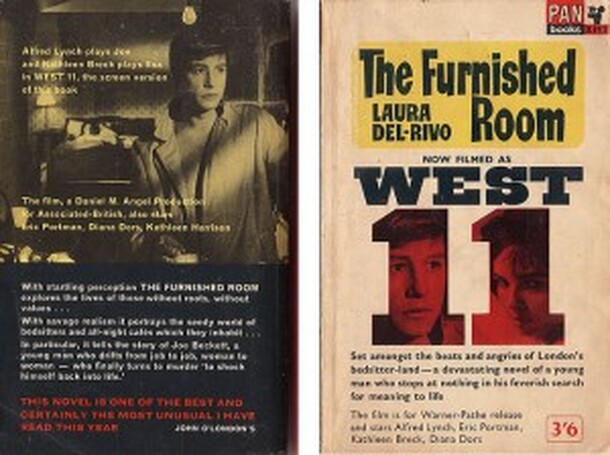 The first setting, Notting Hill, is where the novel’s twenty-something anti-hero, Joseph Ignatius (known as Joe) Beckett, rents the furnished room of the novel’s title. Beckett has escaped from a provincial Catholic family that he finds oppressive to London and a succession of furnished rooms, all ‘much the same’. He suffers from a strong sense of unreality relieved by occasional epiphanies. A once ardent Catholic, he had decided, at the age of 15, to be a priest. The collapse of his faith has left a void that nothing can fill. Though he seems to lack literary aspirations, he keeps a green notebook in which he enters ‘his disbelief in God and in everything, his sensations of unreality and lack of meaning, and his inability to love or feel’.
The first setting, Notting Hill, is where the novel’s twenty-something anti-hero, Joseph Ignatius (known as Joe) Beckett, rents the furnished room of the novel’s title. Beckett has escaped from a provincial Catholic family that he finds oppressive to London and a succession of furnished rooms, all ‘much the same’. He suffers from a strong sense of unreality relieved by occasional epiphanies. A once ardent Catholic, he had decided, at the age of 15, to be a priest. The collapse of his faith has left a void that nothing can fill. Though he seems to lack literary aspirations, he keeps a green notebook in which he enters ‘his disbelief in God and in everything, his sensations of unreality and lack of meaning, and his inability to love or feel’.
His neighbour in a nearby boarding house, an elderly eccentric called Gash left a good career, wife and family, to pursue mystical insights in squalid poverty. Beckett finds Gash, and his room, with its odour of ‘thug cat and Dettol and the stale smell of insanity’, physically repellent but talks at length with him because Gash grasps Beckett’s plight, even though Beckett cannot accept Gash’s mysticism.
Beckett is strongly aware of his violent urges. ‘Once, seeing a bald baby, the impulse to smash its skull had been so strong that he had clenched his fists in fear of giving way to it’. When three West Indians walk with an easy swagger through a hostile white crowd in Notting Hill, Beckett, though he denies being a racist, tenses ‘like a dog ready to spring. Like the others, he had shared in the mob hatred at the cool effrontery of the West Indians’. He feels ‘a burst of sadistic joy’ when reading about a Nazi concentration camp in which a guard shot a whole detachment of panicking women prisoners. Sooner or later, he believes, he will ‘commit a violent crime’, but, for most of the novel, he stays on the plane of fantasy.
In the earlier chapters of the novel, Beckett is boxed into a clerical job at Union Cartons & Packaging (Great Britain) Ltd in Holborn – the parenthesis suggesting a national rather than merely personal inertia, an ironic inflation of the Little Britain that Pip enters when he goes to London in Dickens’s Great Expectations (1861).
A third key London setting in The Furnished Room is what the novel calls ‘the grey wastes of SW5’ – Earl’s Court, where Beckett’s 19-year-old on-off girlfriend, Ilsa Barnes, shares a flat with another young woman. Ilsa has come to London to escape her family, whose Sussex farm figures as a place of constraint rather than naturalness. Originally she chose the art-school route out of conformity, studying at St Martin’s with the idea of becoming a teacher; but she left, averse to the poverty of student life and lacking artistic talent or commitment, and now works in an office.
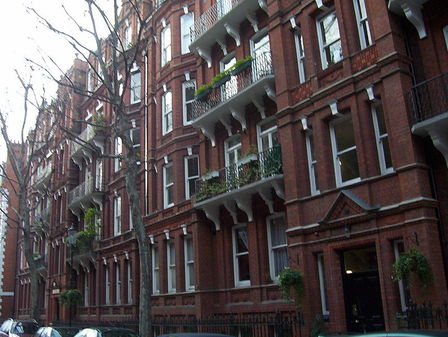
Ilsa likes taking men from other women, making them fall in love with her, and then dumping them, though she acknowledges she has met her match in Beckett, who finds her desirable but, as she recognizes, ‘only gave an imitation’ of loving her. There is a strained quality about Ilsa’s ‘gaiety and her pale taut face’ that evokes the London of the Blitz. ‘She was like a woman in wartime, living it up in order to forget that she might die tomorrow’.
The décor of her Earls Court flat, however, is kitsch-contemporary rather than 1940-ish; it has red curtains ‘patterned with drink labels: Martini, Cinzano, Dubonnet’ and its ornaments include ‘glass tumblers with a playing-card design, bowls of peanuts, a wooden dachshund with a corkscrew for a tail, and a doll dressed in bra and pants’. Beckett has a patronizing vision of Ilsa’s future: ‘This hard-drinking, hard-living, desperately young product of the modern age would become a middle-class housewife’.
A fourth London setting is Camden Town, the location of the larger flat of another, older girlfriend of Beckett’s, Georgia, and of the communal house where Reg Wainwright, a left-wing novelist, lives with his wife and children and others. Georgia, ‘experienced in double beds and saloon bars and in being combined mistress and mother to many men’ , is about 35 and has escaped the fate Beckett predicts for Ilsa. Separated from her husband, Georgia lives with her six-year-old daughter, Teresa. She admires Beckett’s self-important discourses without really understanding them: after he holds forth on the collapse of an absolute value as a cause of crime, she says only, in a deflating compliment: ‘[y]ou are clever, Joe’. Her furnished room is more welcoming than Beckett’s, less kitsch-contemporary than Ilsa’s, aspiring towards a bourgeois interior: it ‘looks more like a drawing-room than a bedsitter’.
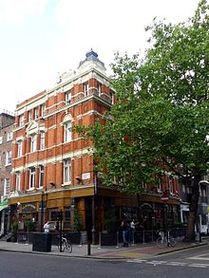
Beckett, however, is on the run from bourgeois interiors and finds solace in Mick’s Café in Charlotte Street, which is in Fitzrovia but also representative of some Soho cafes on the south side of Oxford Street. Its ‘oddly assorted clientele had one thing in common’:
they were all misfits of one sort or another. Because of this, Baroness Tania, who drank methylated spirit, could share a table with Tom, who was a porter and wore British Railways uniform, with Dutchie, whose face bore the scar of a razor slash, and with an ageing young man named Flora who wore make-up and had tinted hair.
But while Beckett is glad to move among misfits because they ask no questions, he cannot commit himself to the misfit life.
An alternative commitment is represented by 45-year-old ex-Army captain Dick Dyce, who is a chancer (as his surname, a homophone for ‘dice’, suggests) and who has an expensive service flat in Grosvenor Court Gardens, SW1. On one level, Dyce is a stock post-1945 English type, ‘the fake major in the Tudor roadhouse who slaps you on the back and asks you to cash his cheque’. But his idolization of lucre makes him a harbinger of post-1980 loadsamoney London, the Dionysian capital of capital. He tells Beckett:
I look at life through money-coloured spectacles. I see the money like the ether, permeating everything. Collecting in pockets here, banks there, financing industry, changing into power like matter changing into energy. And obtained by wits, work, or violence.
When Beckett visits Dyce’s flat, Dyce stresses the link between affluence and crime: ‘The front flats are the classiest, but the back are the most popular because they have fire escapes […] I never met so many crooks as I have since I moved in here’ and the fire escapes enable them to make a quick getaway. Dyce will come to be the chance element, the roll of the dice, which determines Beckett’s future.
After Beckett insults his boss at United Cartons and gets the sack, he becomes an ill, penniless flâneur in London:
Often he walked in Kensington Gardens, liking the feathery sunlight on the grass. In his mouth and nostrils was a flavour like soda-water that belonged to sickness. Sometimes he went to Speakers’ Corner where he engaged in arguments with strangers. Sometimes he went to Brompton Oratory because he liked the Victorian cherubs that ornamented the candelabra. Sometimes he went to Park Lane because it was an expensive area […] Sometimes he spent the night in Covent Garden, which smelled like an orchard. There was an all-night café for the market workers, with yellow-topped tables with bottles of O.K. sauce on them, and thick crockery. He sat in a corner, grim and unspeaking like a secret agent […] Beckett the tramp wandered down dustbin night streets, stole milk and a loaf from a crate outside a café, and saw the dawn break over London.
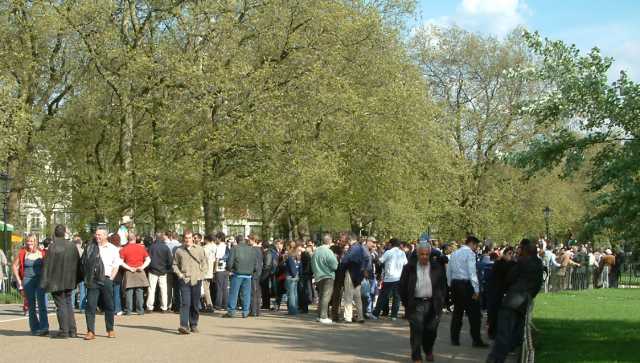
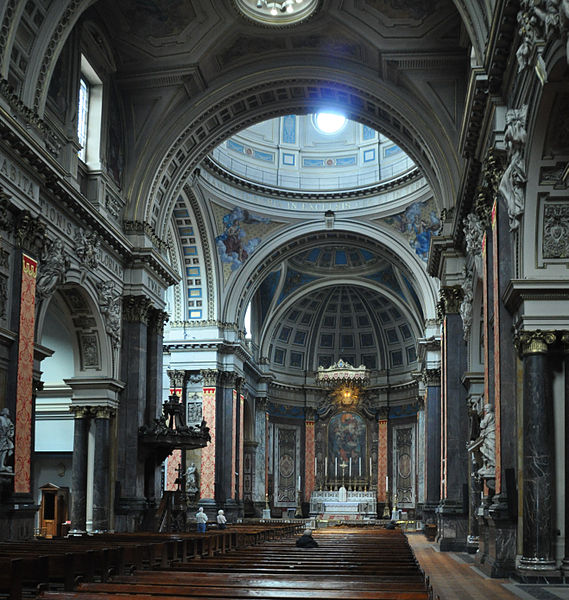
Then Beckett’s father writes to tell him that his mother, with whom he still feels strong bonds despite his rejection of her attempt to make him respectable, is dying of leukaemia. Beckett thinks that taking her to Lourdes might cure her by auto-suggestion. But a Lourdes trip would cost money and Beckett cannot even pay his rent. When his landlady threatens to call in the police, he does a moonlight flit.
A homeless wanderer in London streets, he runs into Dick Dyce again. In Dyce’s flat, they discuss a scheme that Dyce had floated earlier: that Beckett should murder Dyce’s wealthy aunt, Kathleen Dyce Grantley, so that Dyce can inherit her money and give Beckett a cut. Beckett, hoping to obtain both cash and a clear sense of purpose, agrees to the scheme.
Beckett breaks into the home of Dyce’s aunt in Sealing, a town 20 miles from London, and confronts her with a revolver. But he never pulls the trigger; she drops dead from a heart attack. He recognizes the irony of the situation:
The crime, intended to dynamite the way to freedom, had instead been the ultimate unreality, the concentration of all the previous unreality into a sickening unreal nightmare. He had tried to commit an act of will, but instead events had been taken out of his control.
Moreover, Beckett realizes that, at the crimescene, he has dropped, from the portable chess set that he is known to carry, a broken white bishop; an ironic ecclesiastical self-incrimination by the young man who had once wanted to be a priest. He returns to Notting Hill to give himself up at the local police station, without implicating Dyce; he wants ‘to complete his circuit; to return to the district where he had fought the looming walls of his bedsitter’.
Beckett meets Gash’s landlady, who tells him Gash is dead. In Tewkesbury Road, Becket notices someone, whom he suspects is a plainclothes policeman, watching his former boarding house. Then Ilsa, who has been looking for him, hails him by name, and runs into his arms, an inadvertent Judas revealing his identity to the watcher and thwarting Beckett’s desire to give himself up of his own volition. The watcher walks towards him, presumably to arrest him, but the end of the novel does not confirm this, shifting from Beckett’s existential melodrama to a last paragraph evoking the circumambient daily life of the capital:
The children were wheeling and shouting as always; their screams ricocheted from the buildings. Two women walked along the pavement, pushing their shopping in wheeled baskets. A front door banged, a radio played. The sky was London grey over Tewkesbury Road on a Saturday morning.
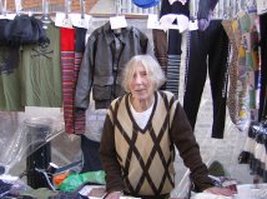
The tension between the quotidian and the extraordinary in London life runs through The Furnished Room and throughout Del-Rivo’s career.
Now almost 80, she still lives in West 11, runs a clothing stall in the Portobello Road, and continues to write.
Her volume of short stories, Where is My Mask of an Honest Man?, is due out in September 2013 and is set in and around – where else? – West 11.
Nicolas Tredell is a freelance writer. He formerly taught literature and film at Sussex University. His website is at http://nicolastredell.co.uk/
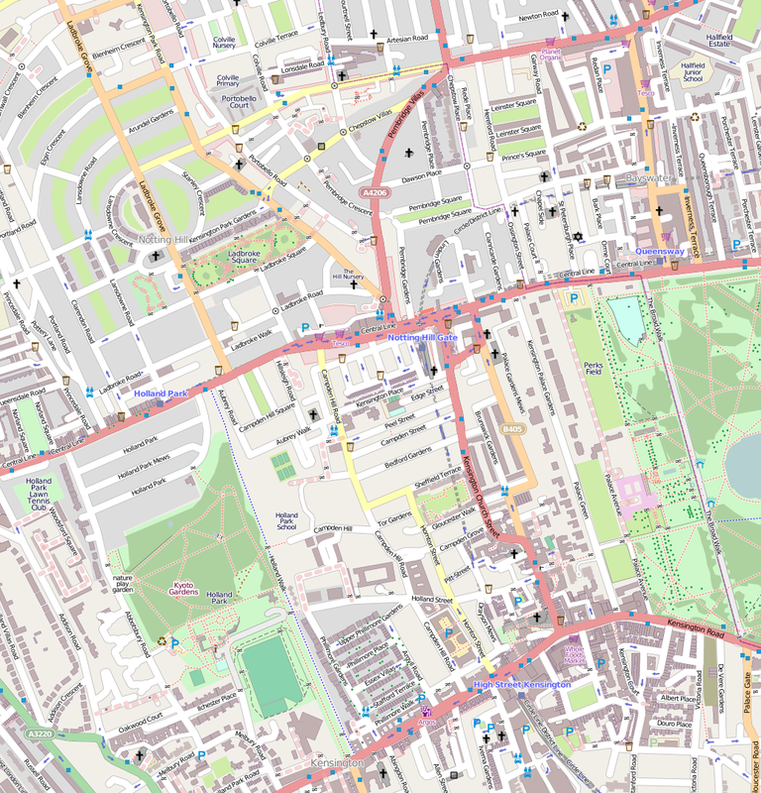
References and Further Reading
Kenneth Allsop, The Angry Decade: a Survey of the Cultural Revolt of the Nineteen-Fifties (London: Peter Owen, 1958), esp. Part 4, ‘The Law-Givers’, pp. 148-94
Laura Del-Rivo, The Furnished Room (London: Hutchinson, 1961; Nottingham: Five Leaves Publications, 2011)
Laura Del-Rivo, Daffodil on the Pavement (London: Hutchinson, 1967); republished under Del-Rivo’s preferred title of Animals (London: Pan, 1970)
Laura Del-Rivo, Speedy and Queen Kong (Nottingham: Paufict, Pauper’s Press, 2004)
Laura Del-Rivo, ‘Dark Angel’, 3:AM Magazine (31 Aug 2012), available at:
http://www.3ammagazine.com/3am/dark-angel/
Laura Del-Rivo, ‘J Krissman in the Park’, 3:AM Magazine (6 Sep 2012), available at:
http://www.3ammagazine.com/3am/j-krissman-in-the-park/
Laura Del-Rivo, Where is My Mask of an Honest Man? (London: Holland Park Press, forthcoming Sep 2013)
Bill Harding, The Films of Michael Winner (London: Frederick Muller, 1978), esp. pp. 21-25 on ‘West 11’, the film adaptation of The Furnished Room
Ida Kar, Five photographs of Laura Del-Rivo, National Portrait Gallery, available at:
http://www.npg.org.uk/collections/search/person/mp95105/laura-del-rivo
Paul Newman, Murder as an Antidote for Boredom: The Novels of Colin Wilson, Laura Del-Rivo and Bill Hopkins, Colin Wilson Studies no. 7 (Nottingham: Paupers’ Press, 1996)
Cathi Unsworth, ‘The Furnished Room by Laura Del-Rivo – review’, Guardian, 6 December 2011, available at:
http://www.guardian.co.uk/books/2011/dec/06/furnished-room-del-rivo-review
Cathi Unsworth, ‘Friday film focus: West 11, 3:AM Magazine (7 Sep 2012), available at:
http://www.3ammagazine.com/3am/laura-del-rivo-back-in-black/
Colin Wilson, Voyage to a Beginning: a Preliminary Autobiography (London: Cecil and Amelia Woolf, 1968), esp. pp. 89-90
Colin Wilson, Dreaming to Some Purpose (2004; London: Arrow, 2005), esp. pp. 64-8
All rights to the text remain with the author.
